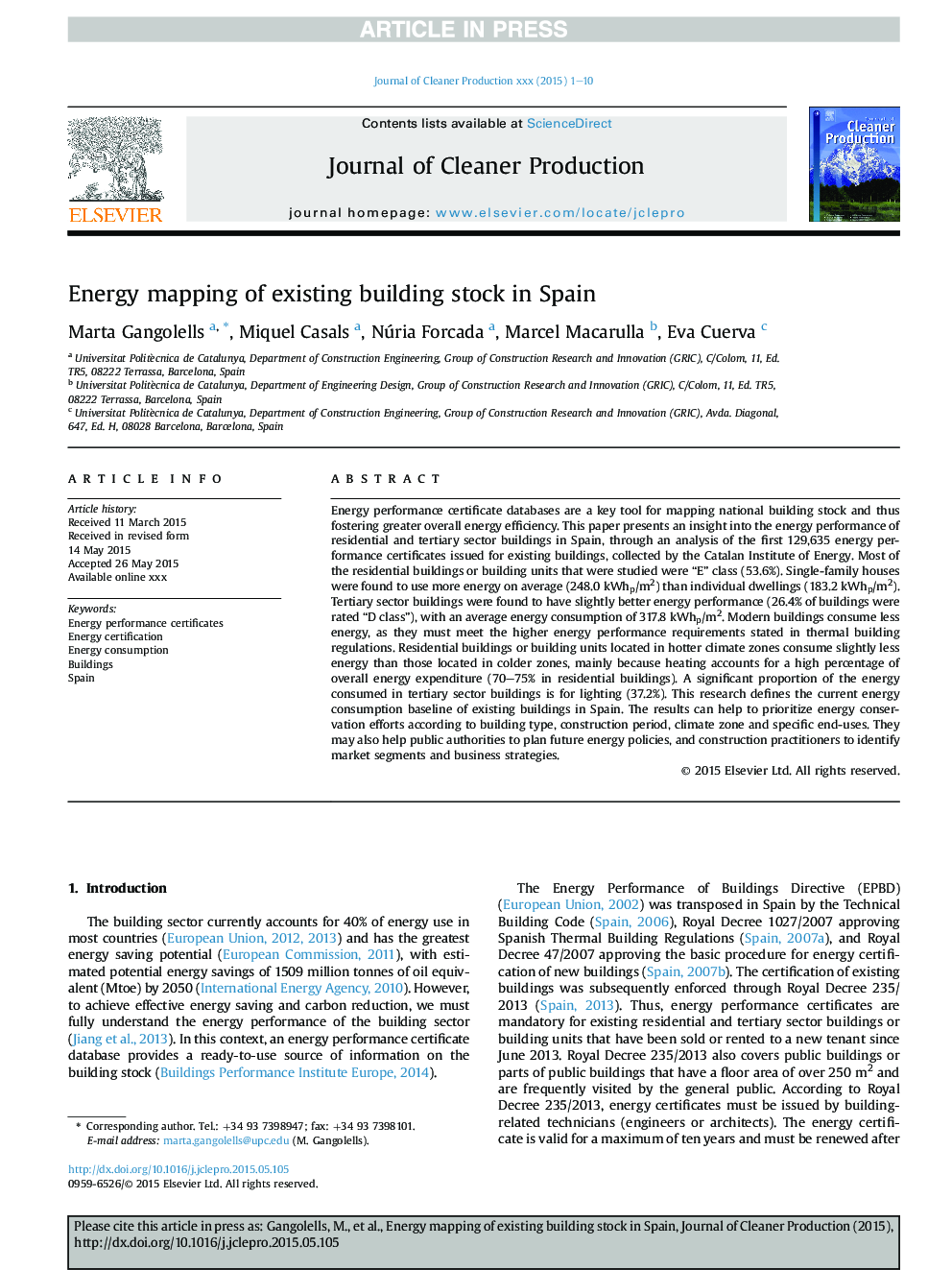| Article ID | Journal | Published Year | Pages | File Type |
|---|---|---|---|---|
| 10687934 | Journal of Cleaner Production | 2016 | 10 Pages |
Abstract
Energy performance certificate databases are a key tool for mapping national building stock and thus fostering greater overall energy efficiency. This paper presents an insight into the energy performance of residential and tertiary sector buildings in Spain, through an analysis of the first 129,635 energy performance certificates issued for existing buildings, collected by the Catalan Institute of Energy. Most of the residential buildings or building units that were studied were “E” class (53.6%). Single-family houses were found to use more energy on average (248.0Â kWhp/m2) than individual dwellings (183.2Â kWhp/m2). Tertiary sector buildings were found to have slightly better energy performance (26.4% of buildings were rated “D class”), with an average energy consumption of 317.8Â kWhp/m2. Modern buildings consume less energy, as they must meet the higher energy performance requirements stated in thermal building regulations. Residential buildings or building units located in hotter climate zones consume slightly less energy than those located in colder zones, mainly because heating accounts for a high percentage of overall energy expenditure (70-75% in residential buildings). A significant proportion of the energy consumed in tertiary sector buildings is for lighting (37.2%). This research defines the current energy consumption baseline of existing buildings in Spain. The results can help to prioritize energy conservation efforts according to building type, construction period, climate zone and specific end-uses. They may also help public authorities to plan future energy policies, and construction practitioners to identify market segments and business strategies.
Related Topics
Physical Sciences and Engineering
Energy
Renewable Energy, Sustainability and the Environment
Authors
Marta Gangolells, Miquel Casals, Núria Forcada, Marcel Macarulla, Eva Cuerva,
